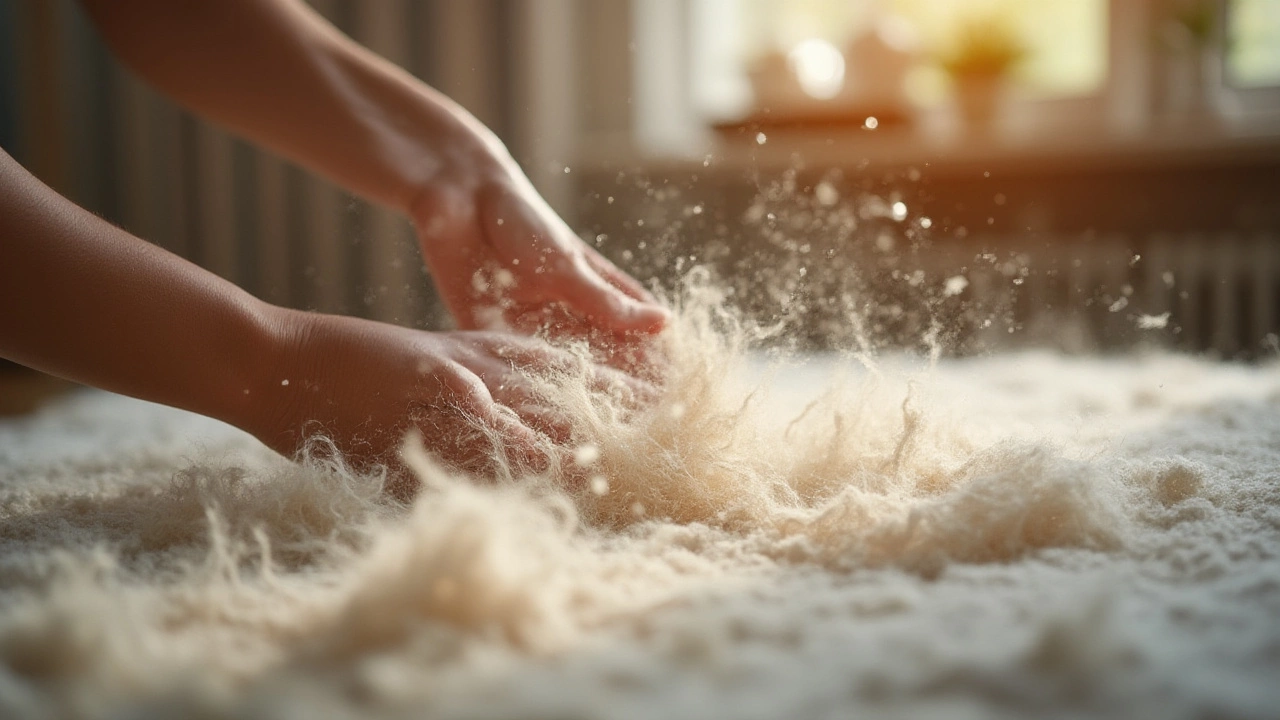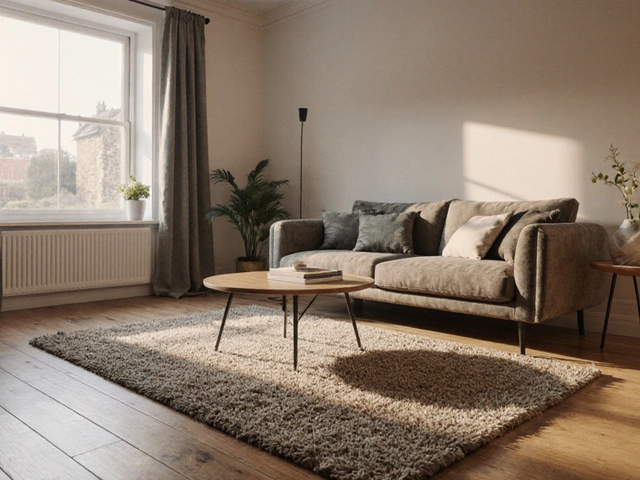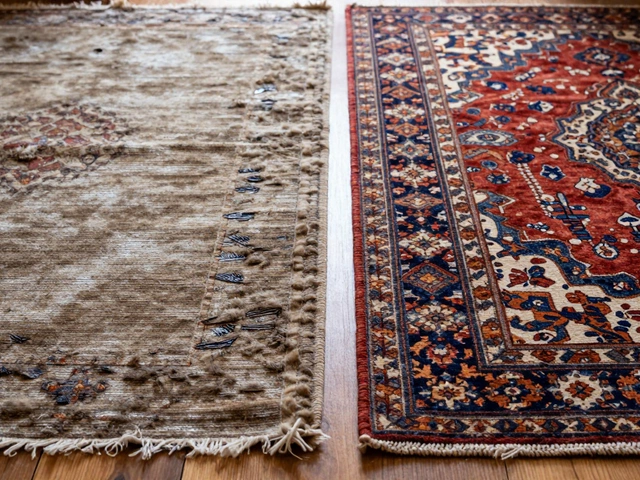Your vacuum sounds like it’s working overtime, but no matter what, those little rug fuzzies keep showing up on socks, under your couch, and clinging to every dark pair of leggings. Shed happens! But some rugs drop fibers much more than others—and it’s not random at all. If you’ve ever wondered why one rug turns your house into a fluff factory while another seems to stay picture-perfect, you’re absolutely not alone. Shedding isn’t just annoying—it’s part science, part style, and sometimes a little bit of rug roulette. The good news? You really can outsmart most of the mess once you know exactly which rugs shed the most, why they do it, and which low-shed options are really worth your money.
Why Do Some Rugs Shed So Much?
Shed-prone rugs don’t just randomly explode into fuzz-mageddon. It’s all about the type of fibers, how those fibers are twisted, the density, and the way the rug is made. Cheap, loosely spun wools are the usual suspects. It’s like when you wear a loosely knit sweater—it pills and fuzzes up everywhere. Dense, high-quality wool, on the other hand, is much less drama, thanks to tighter fibers that don’t let go of as many yarns. But wool isn’t the only culprit. Some viscose, polyester, cotton, and especially low-end shag and tufted rugs, are practically designed to moult every time you walk on them. Want specifics? The industry talks about a little number called ‘fiber staple length.’ The shorter the strand, the higher the chance it’ll wriggle out. Wools from New Zealand often have longer staples, so they shed less than their cousin sheep from, say, India or China. That’s why expensive Persian or Turkish wool rugs don’t usually shed for long—those weavers are picky with their threads!
Hand-knotted rugs, because the yarn is physically knotted around a strong foundation, can take years of foot traffic without turning your living room into a lint field. Hand-tufted rugs? Whole different game. These use glue to hold the fibers to the base—eventually, with enough vacuuming and feet, those glue bonds weaken, and the yarn slips right out. The result? Your new hand-tufted rug might look fabulous on Day One but could thin out faster than a cashmere scarf in a puppy pen. And let’s talk about one shocker: synthetic fiber rugs (think cheap polyprop) often shed less at first, but can actually start to break down faster as they age, especially if they’re exposed to too much sun or rough cleaning.
Here’s something you rarely read: construction quality matters even more than pure material. You can buy a top-shelf wool rug that sheds barely at all, while that bargain bin cotton rug drops fuzz like confetti just because it wasn’t woven right. Always check the pile density (how tightly packed the fibers feel) and steer clear of loose, fluffy piles if you want to spend less vacuuming and more relaxing.

Materials Most Likely to Shed (and Those That Won’t)
Not all rug fibers have the same shedding personality. Some just can’t help themselves. Wool tops the list—especially budget wool and artisan hand-tufted wool pieces. With cheaper wools, the natural scale layer covering hair strands often gets broken off in manufacturing. That means fibers have nothing holding them back from tumbling out every time you so much as run your hand through them. Viscose (sometimes called artificial silk or rayon) is next on the naughty list. Viscose is basically wood pulp spun like yarn, so the fibers are short and incredibly soft—but that softness comes at a price. Expect to see a steady waterfall of micro-fibers on your floors for months, plus viscose rugs are delicate and don’t love abrasion.
The list of high-shedding rugs includes:
- Wool (especially hand-tufted or low-cost varieties)
- Viscose, rayon, or bamboo silk
- Cotton (loose weave bath mats, flatweaves, or shag styles)
- Shag rugs (made with any high-pile or loose fiber, both synthetic and natural)
- Low-twist synthetic yarns, mainly acrylic and polypropylene
Here’s a table that lays out common rug materials and their shedding tendencies so you can compare at a glance:
| Material | Shed Level (1-5) | Typical Use | Tips |
|---|---|---|---|
| Hand-tufted wool | 5 | Living rooms, bedrooms | Vacuum regularly; expect up to 6 months of shedding |
| Hand-knotted wool | 2 | Luxury spaces | Minimal shedding after first month |
| Viscose/Rayon | 4 | Bedrooms, decorative | Avoid heavy traffic; dry clean only |
| Shag (synthetic) | 5 | Kids’ rooms, dens | Avoid if you hate fuzz; spot clean gently |
| Cotton flatweave | 3 | Entrances, bathrooms | Expect some ongoing shedding |
| Polypropylene (dense) | 1 | Outdoor, high traffic | Minimal early shedding, but wear out over time |
| Jute/Sisal | 1 | Hallways, kitchens | Low shedding; some breaking fibers at first |
So what if you just can’t deal? Look for rugs made from tightly twisted synthetic fibers (like high-density nylon or polypropylene) or plant-based blends like jute, sisal, or even chenille. These options rarely shed in noticeable amounts, won’t be ruined by the average dog, and are usually more budget-friendly than designer wool. Want a rug you can pass down to your kids someday? Go for a classic hand-knotted Persian or Turkish wool rug—most will only lose some surface fibers the first few months as they "settle in." After that, it’s basically fuzz-free living.

Tips to Minimize Rug Shedding and Shop Smart
So, you already have a shed-happy rug, or you’re eyeing something new but want to skip the endless lint-roller circuit. Smart moves start right on day one. If possible, read the product label or talk to your rug retailer about fiber type and construction. If you see "hand-tufted," ask about glue binders (the more glue, the quicker it breaks down). Here’s a tip: If you rub your hand across a new rug at the store and get a palm full of fuzz, it’s a preview of your future cleaning schedule.
When you bring home a new rug, give it a solid shake outside (if possible) before laying it down. Vacuum gently at first—new rugs can shed most heavily in the beginning, but aggressive brushing can make things worse. Use a vacuum without a rotating beater bar if you have a loose-pile or delicate-fiber rug. Regular vacuuming (one to two times per week) can tame early shedding, but doing it too hard just rips out more fibers. Some people swear by using a carpet rake (yes, that’s a real thing) to lift and remove loose bits, especially with high-pile or shag rugs. Don’t be afraid to just pick up big tufts and toss them by hand. It’s weirdly satisfying and gets the job done quickly.
- Felt or rubber rug pads help absorb shock and keep fibers from breaking under foot (this actually works!)
- Keep rugs out of direct sunlight to avoid fiber breakdown, especially with viscose or low-budget synthetics
- Rotate your rug every few months so shedding (and wear) happens evenly—some spots get more foot traffic and lose fibers quicker
- For natural fiber rugs like wool or jute, a professional rug cleaning every couple of years extends their life and keeps fuzz to a minimum
And don’t beat yourself up if your favorite rug is a shedder—that’s just how some fibers roll. If you’re not a fan of constant maintenance, stick to flatweaves, dense synthetics, or the magic of hand-knotted wool. But if you love the plush look and feel (and don’t mind the extra vacuuming), no shame in living the fuzz life. Rugs are meant to be lived on, not just stared at.



